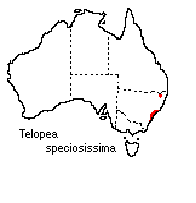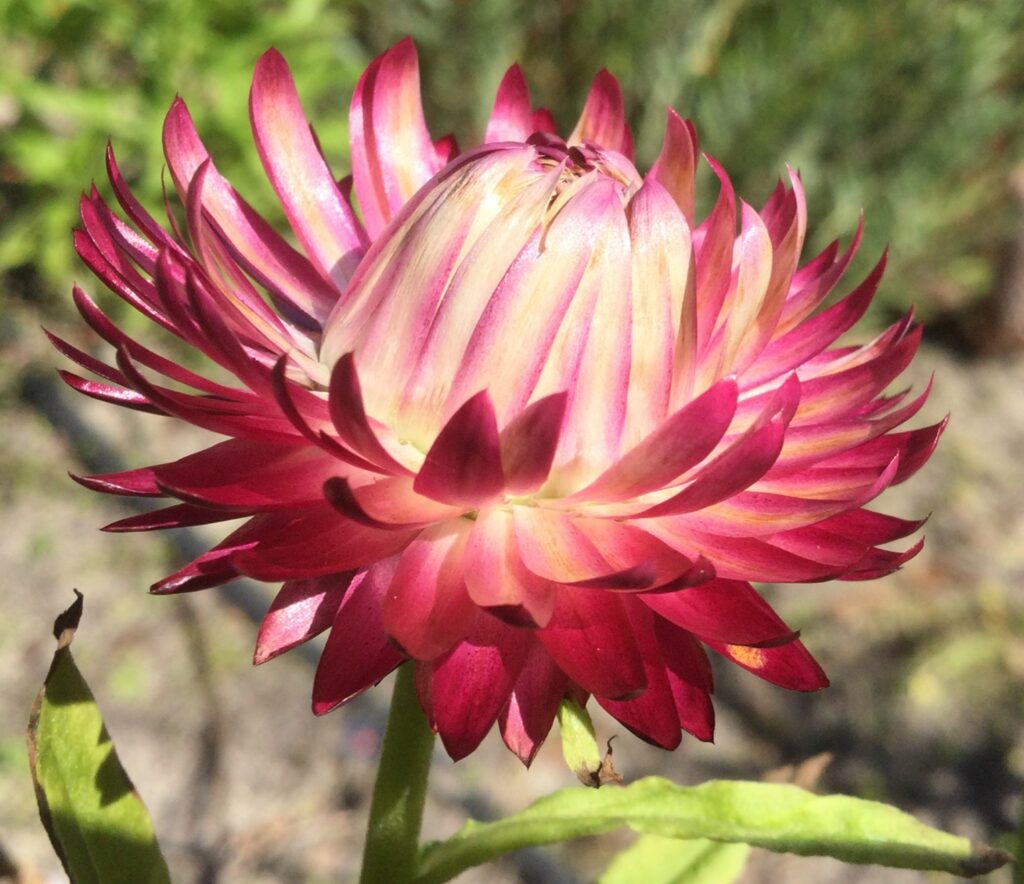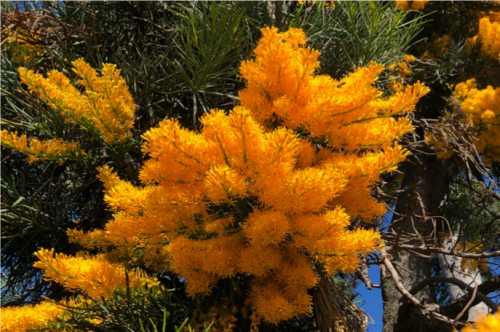Scientific Name: TELOPEA Speciosissima
Common Name: Waratah
Alternative Common Name: New South Wales Waratah
Family: Fabaceae
Height: Up to 3m
Width: Up to 1.5m
Description: Magnificent floral emblem of New South Wales. A stout, erect perenial shrub with long, leathery, dark green leaves. Brilliant large crimson flowers in the Spring.
Flowers: Prolific crimson flowers in rounded heads 7 to 15 cm across, with crimson bracts, 5 to 7 cm long. Nectar-feeding birds act as pollinators. Spectacular cut flowers that last well in water.
Soil: Best grown in deep sand or sandy loam low in plant nutrients with excellent drainage and airation but assured moisture. Best with a leaf compost mixed in surrounding soil to a depth of 5-6 cms. Wildflower Seed Starter granules are ESSENTIAL to trigger seed germination.
Aspects: A spectacular garden plant in the right soil and climate. Likely to fail if suitable soil conditions, aspect or climate are not provided. Resists destruction by bushfires, a natural element of their habitat, by regenerating from the root-stock. Flowering recommences two years after a moderate fire.
Habitat: Central coast and adjoining mountains of New South Wales, from sea level to above 1000 metres. Grows mainly in the shrub understorey in open forest developed on sandstone and adjoining volcanic formations. Rainfall is moderately high.
Growing: Sow seeds on the surface of a coarse sandy soil and very lightly cover with soil. Add WILDFLOWER SEED STARTER granules to surface and water in. Germination usually takes 3 – 6 weeks. Soon after germination transplant seedlings into individual pots of similar soil. Seedlings can be prone to fungal disease. Reduce risks by exposing the seedlings to full light, except just after transplanting.
Landscape: In garden beds and rockeries in open under-storey or otherwise semi-shaded positions. May harden to partly open sunny positions but will not take harsh full sun.
Cultivation: Plants should be grown in lightly shaded to sunny positions in deep, well drained weed-free soil. Water well until fully established but avoid waterlogging. Never let soil dry out completely either. Responds well to pruning which encourages flowering the following year and overcomes a tendency to become straggly. Some pruning is achieved by cutting flowers for decoration. Can respond well to slow-release fertilizer with low phosphorous content, applied in Spring.
Seed Starter Required: Essential



